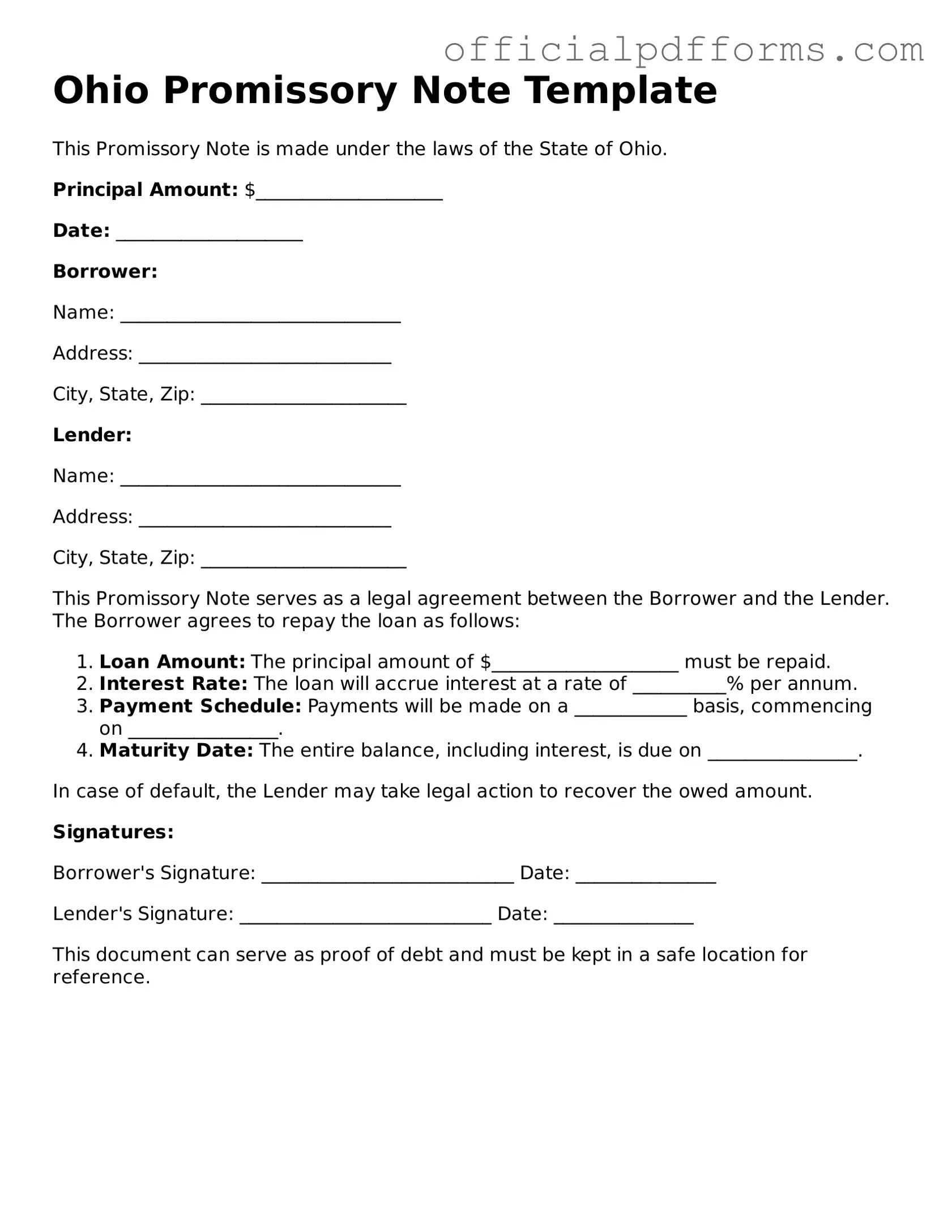What is a Promissory Note in Ohio?
A Promissory Note is a legal document that outlines a promise to pay a specific amount of money to a designated person or entity at a specified time or on demand. In Ohio, this document serves as evidence of a debt and includes details such as the amount owed, the interest rate, and the repayment schedule. It is important for both the lender and the borrower to understand the terms outlined in the note to ensure clarity and prevent disputes.
Who can use a Promissory Note in Ohio?
Any individual or business can use a Promissory Note in Ohio. This includes personal loans between friends or family members, as well as formal agreements between businesses. Both parties involved should ensure that they fully understand the terms of the agreement and seek legal advice if necessary, especially for larger amounts or complex situations.
What are the essential elements of an Ohio Promissory Note?
For a Promissory Note to be valid in Ohio, it should generally include the following elements:
-
The names and addresses of the borrower and lender.
-
The principal amount being borrowed.
-
The interest rate, if applicable.
-
The repayment schedule, including due dates.
-
Any penalties for late payment.
-
Signatures of both the borrower and lender.
Including these elements helps ensure that the note is enforceable in a court of law if necessary.
Is a Promissory Note legally binding in Ohio?
Yes, a Promissory Note is legally binding in Ohio as long as it meets the necessary requirements. When both parties sign the document, they are agreeing to the terms laid out in the note. If either party fails to uphold their end of the agreement, the other party may have legal grounds to pursue repayment or other remedies through the court system.
Can a Promissory Note be modified after it is signed?
Yes, a Promissory Note can be modified after it is signed, but both parties must agree to the changes. It is advisable to create a written amendment to the original note that outlines the specific changes. This helps to avoid confusion and ensures that both parties are aware of the new terms. Both parties should sign this amendment to make it valid.
What happens if the borrower defaults on the Promissory Note?
If the borrower defaults on the Promissory Note, the lender has several options. They may choose to contact the borrower to discuss the situation and seek a resolution. If this does not work, the lender can pursue legal action to recover the owed amount. This could involve filing a lawsuit in a court. It is important for both parties to understand the consequences of defaulting on the note and to communicate openly about any issues that arise.
Where can I find a Promissory Note template for Ohio?
Promissory Note templates can be found online through various legal websites, or you may consult with an attorney who can provide a customized document tailored to your specific needs. It is crucial to ensure that any template you use complies with Ohio laws and meets the requirements necessary for enforceability. Having a properly drafted note can help protect the interests of both the lender and the borrower.
